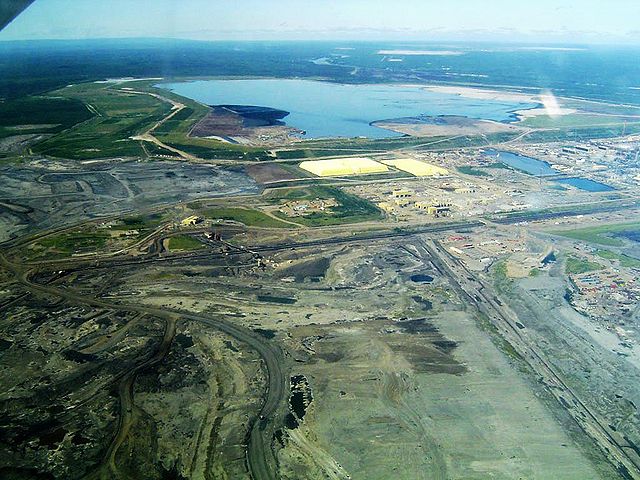Horseshoe Canyon Formation
The Horseshoe Canyon Formation is a stratigraphic unit of the Western Canada Sedimentary Basin in southwestern Alberta. It takes its name from Horseshoe Canyon, an area of badlands near Drumheller.
Horseshoe Canyon Formation at Horsethief Canyon, near Drumheller. The dark bands are coal seams.
Contact (red arrow) between the underlying marine shales of the Bearpaw Formation and the coastal Horseshoe Canyon Formation. Coal beds (black bands) are common in the Horseshoe Canyon Formation and were formed in coastal swamps.
Edmontosaurus
Hypacrosaurus
Western Canadian Sedimentary Basin
The Western Canadian Sedimentary Basin (WCSB) underlies 1.4 million square kilometres (540,000 sq mi) of Western Canada including southwestern Manitoba, southern Saskatchewan, Alberta, northeastern British Columbia and the southwest corner of the Northwest Territories. This vast sedimentary basin consists of a massive wedge of sedimentary rock extending from the Rocky Mountains in the west to the Canadian Shield in the east. This wedge is about 6 kilometres (3.7 mi) thick under the Rocky Mountains, but thins to zero at its eastern margins. The WCSB contains one of the world's largest reserves of petroleum and natural gas and supplies much of the North American market, producing more than 450 million cubic metres per day of gas in 2000. It also has huge reserves of coal. Of the provinces and territories within the WCSB, Alberta has most of the oil and gas reserves and almost all of the oil sands.
The Leduc No. 1 discovery sparked the oil boom in 1946
Mine at the Athabasca Oil Sands
Drilling rig in the gas bearing Greater Sierra field







